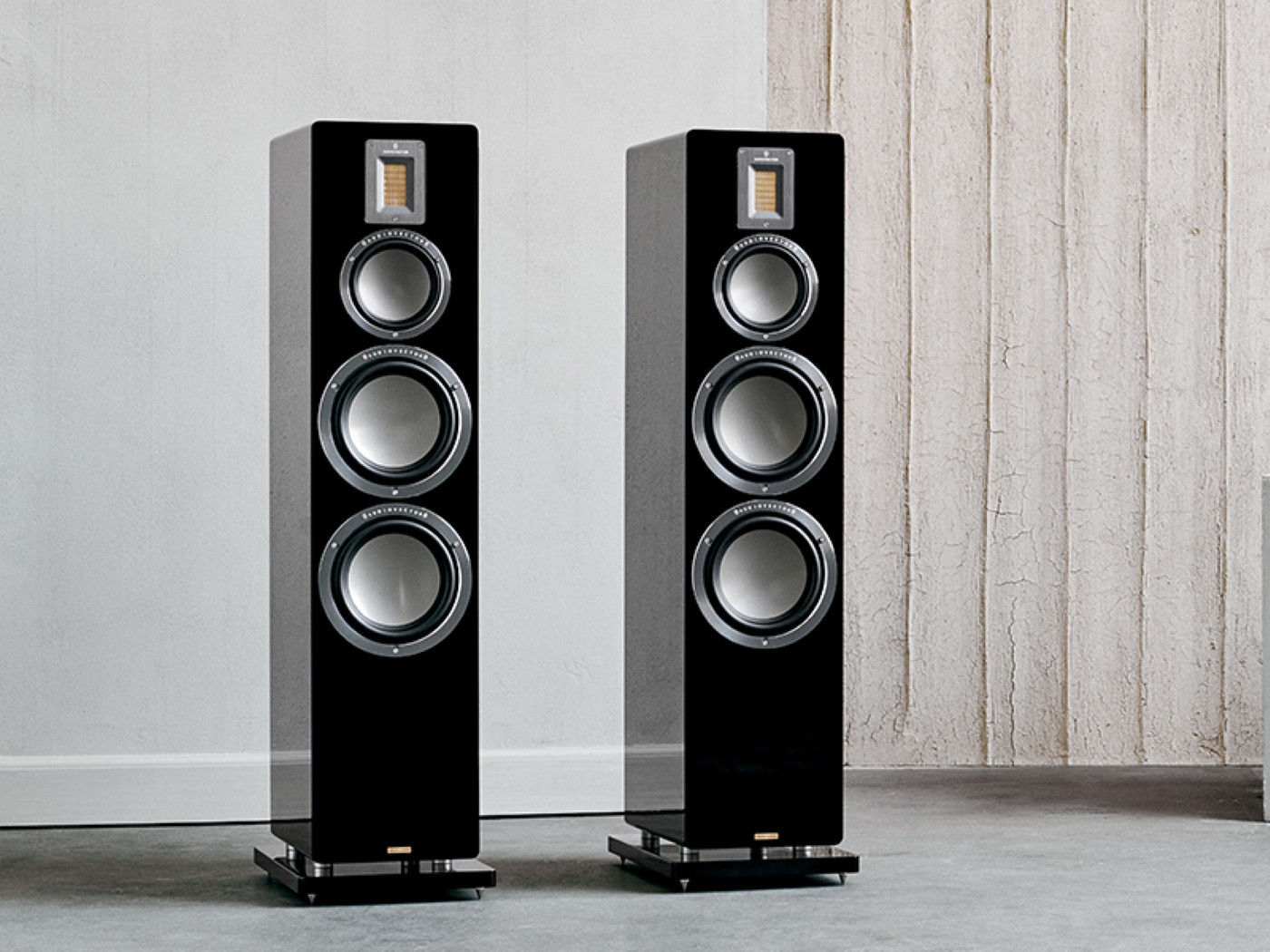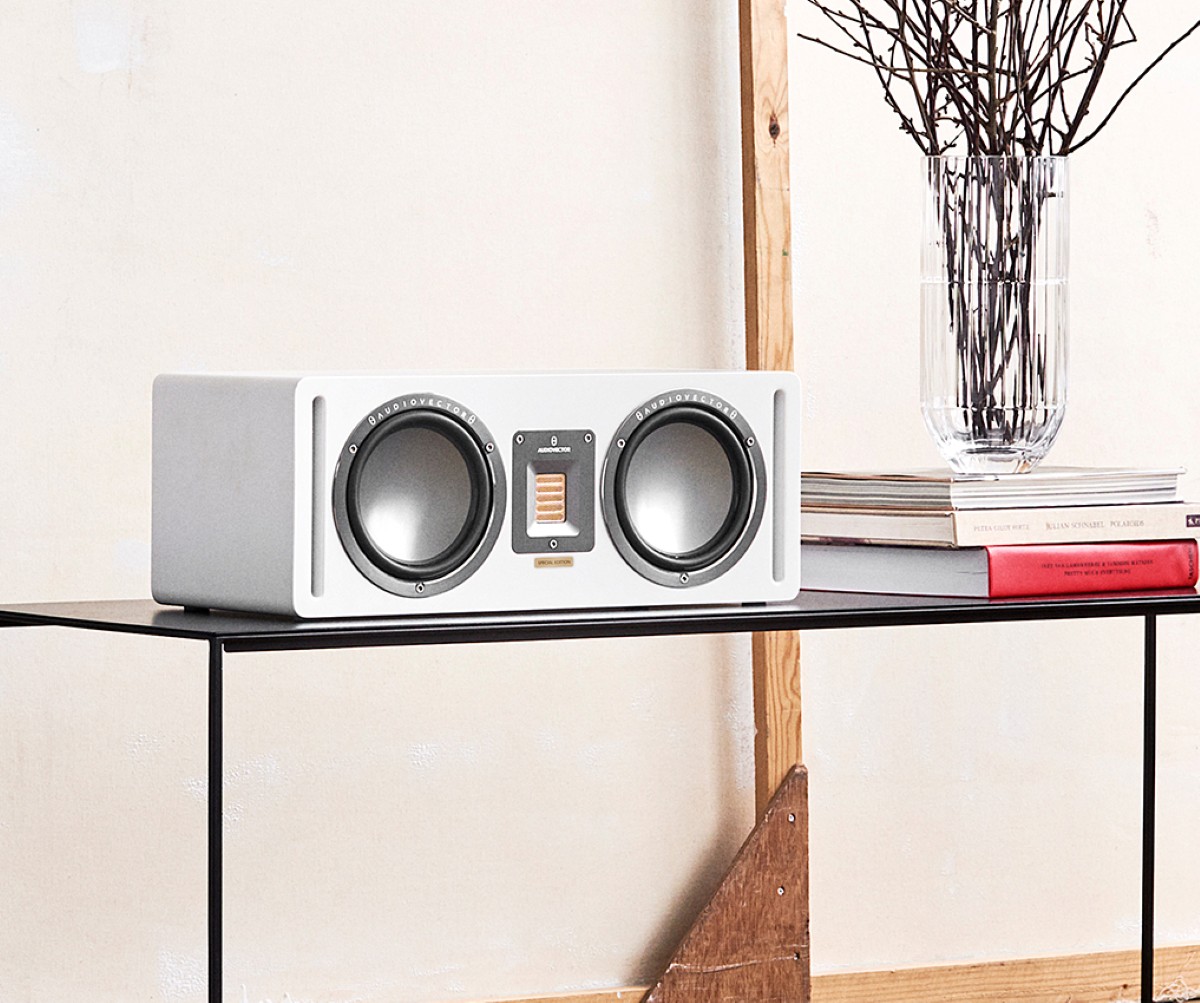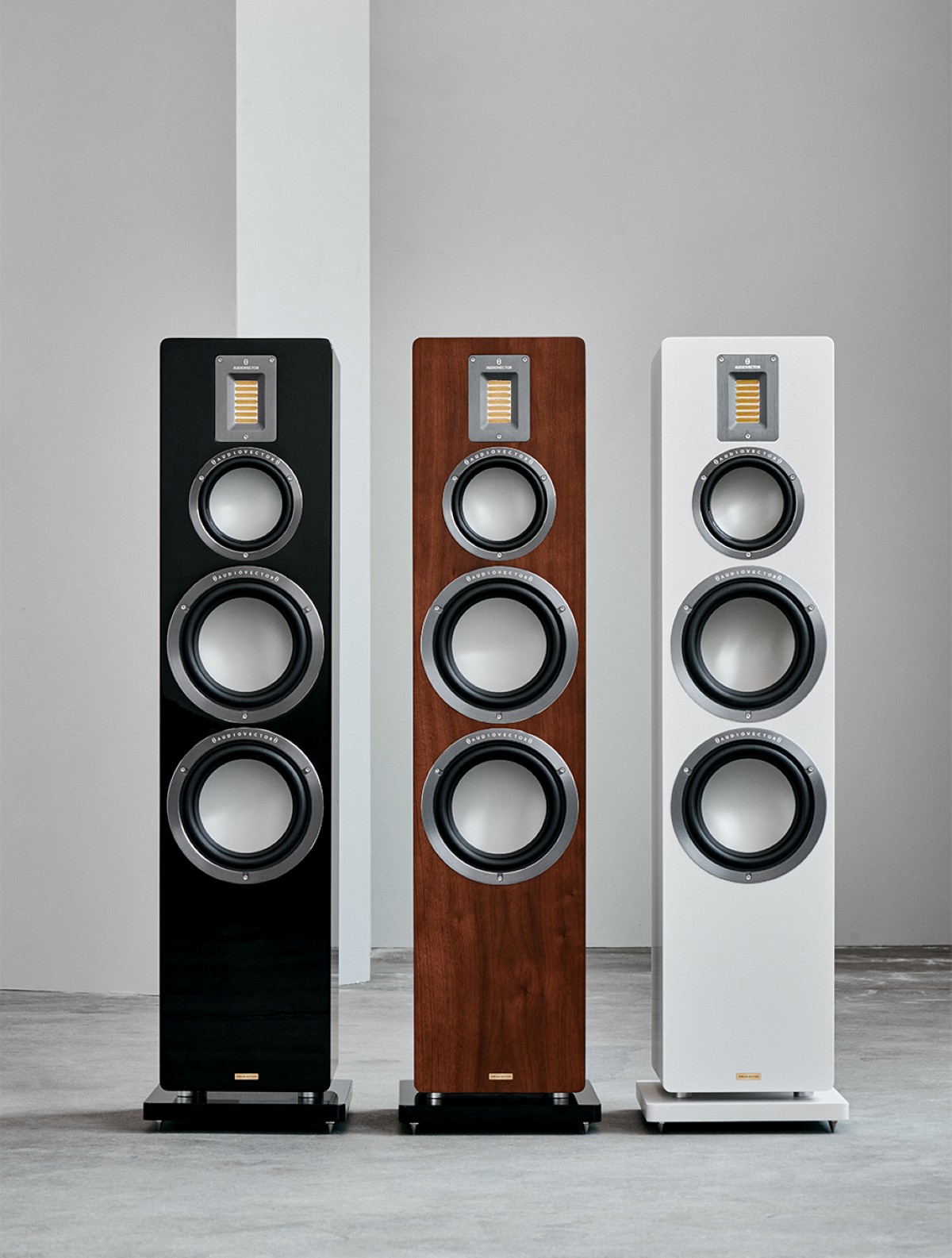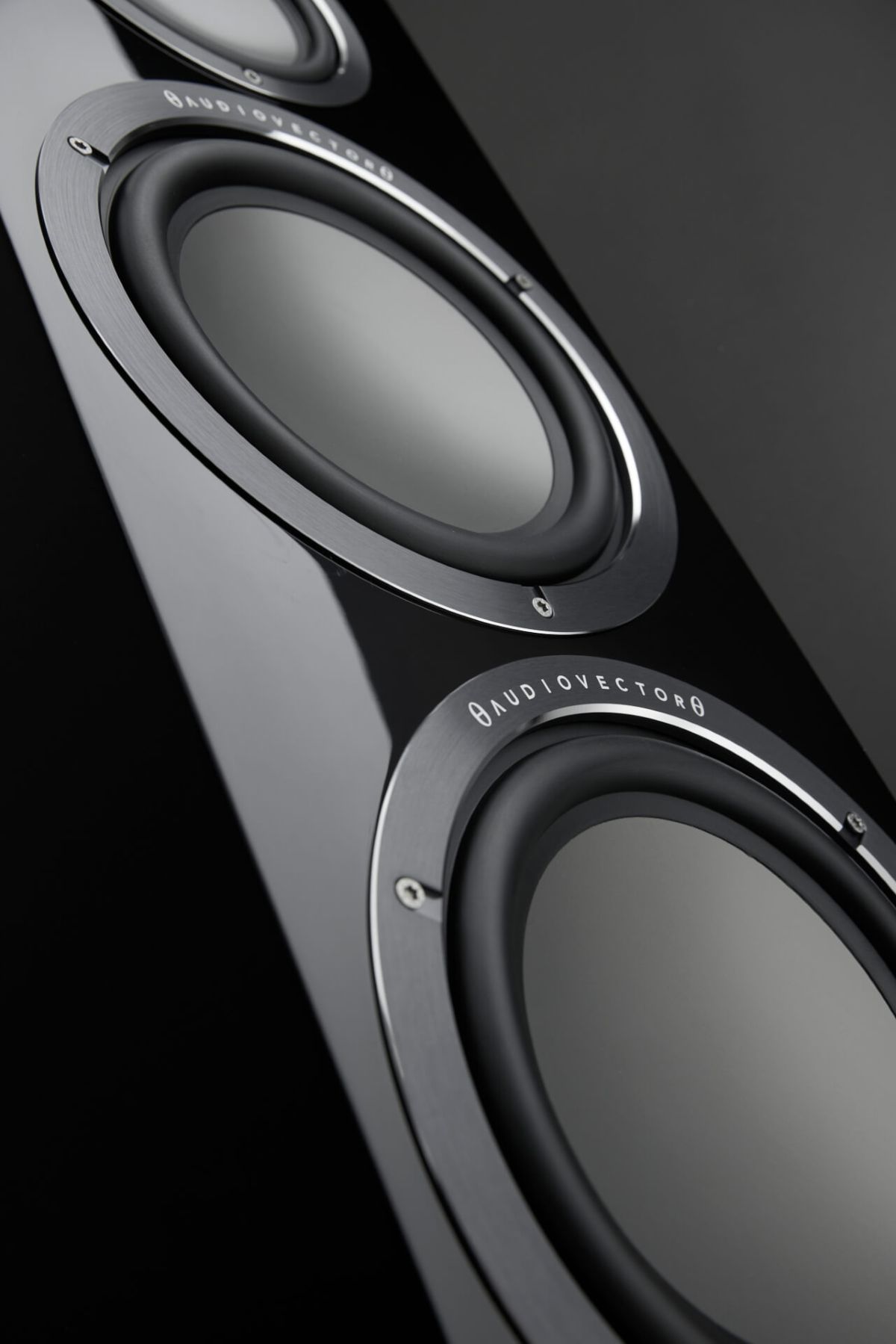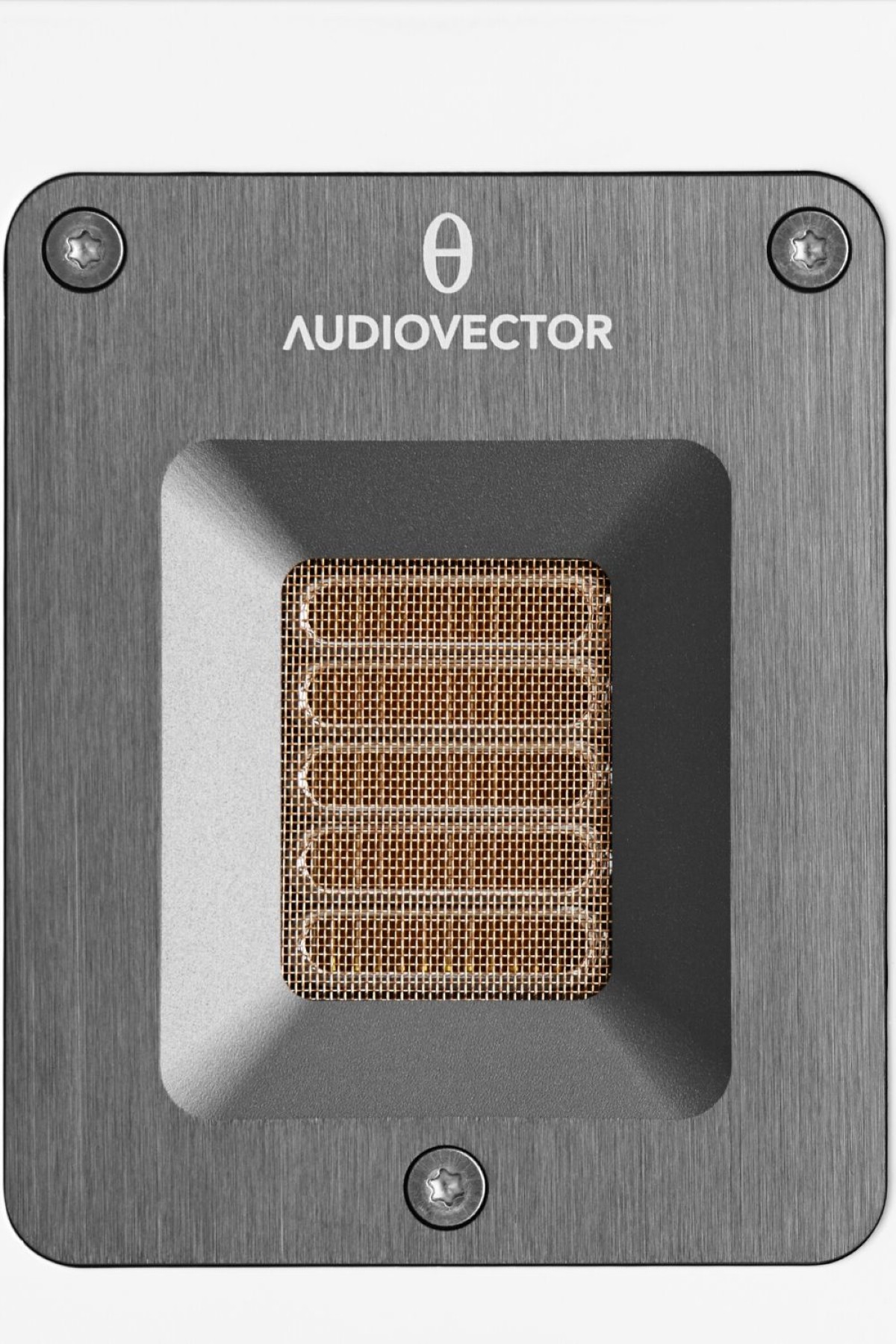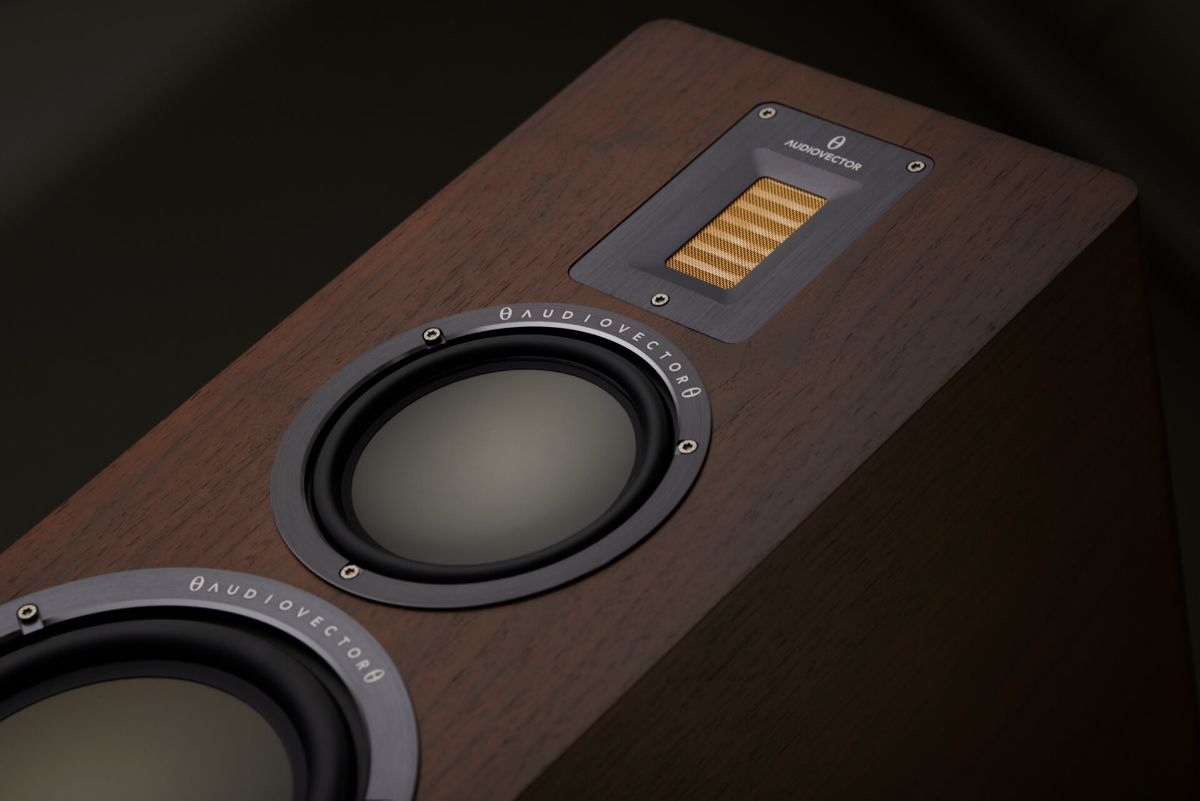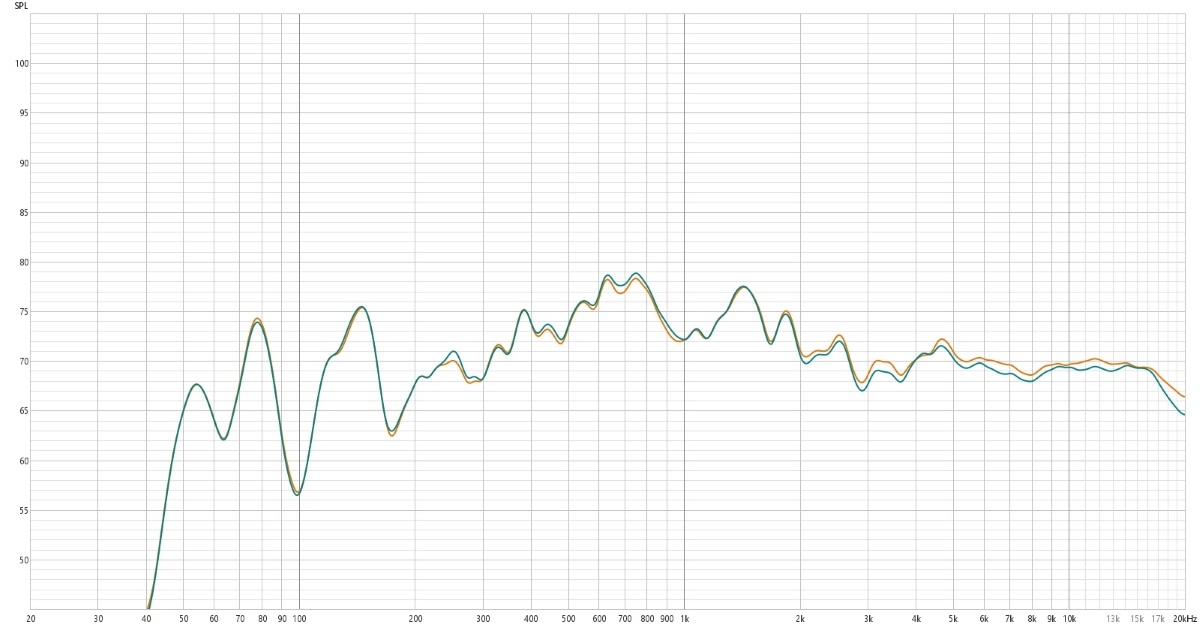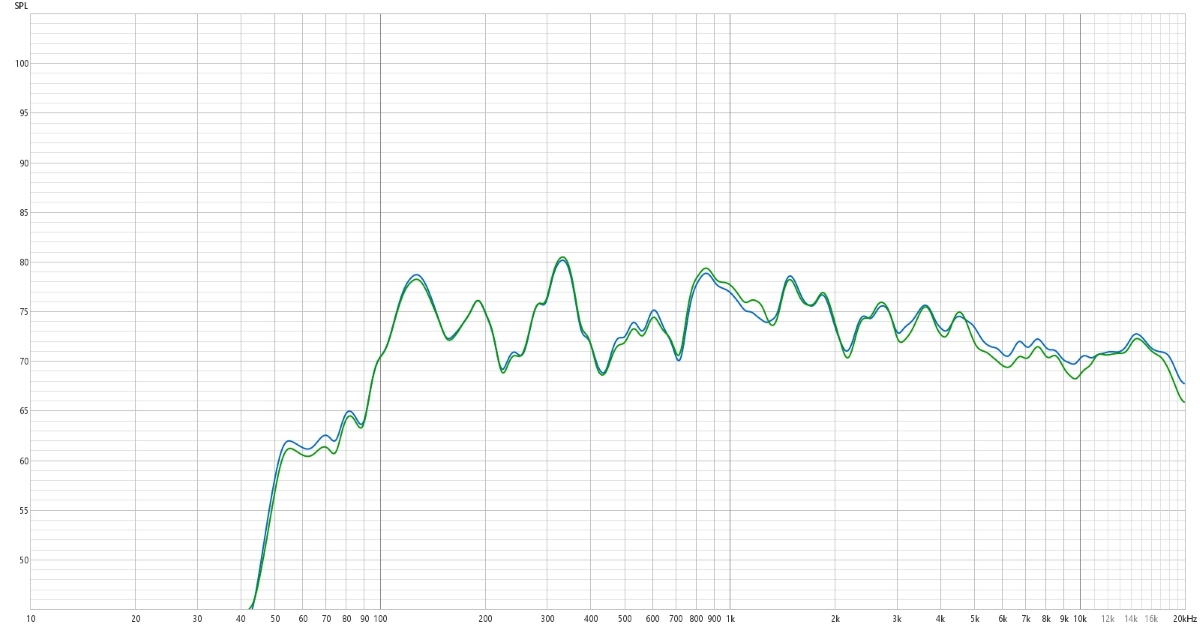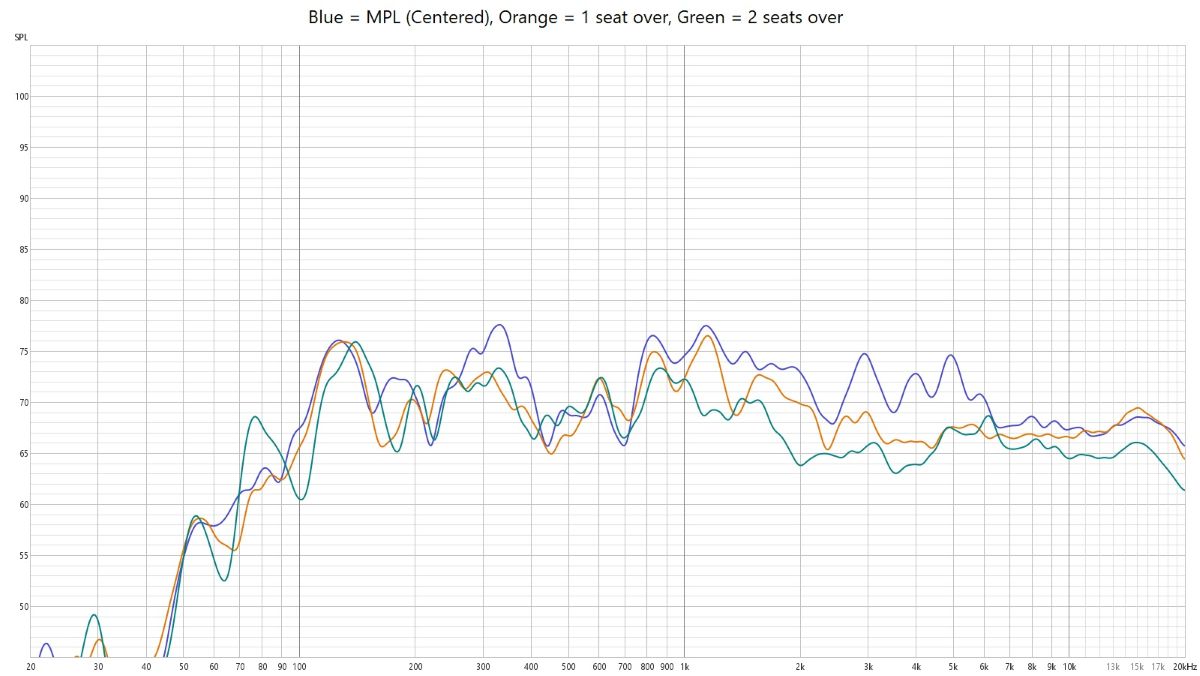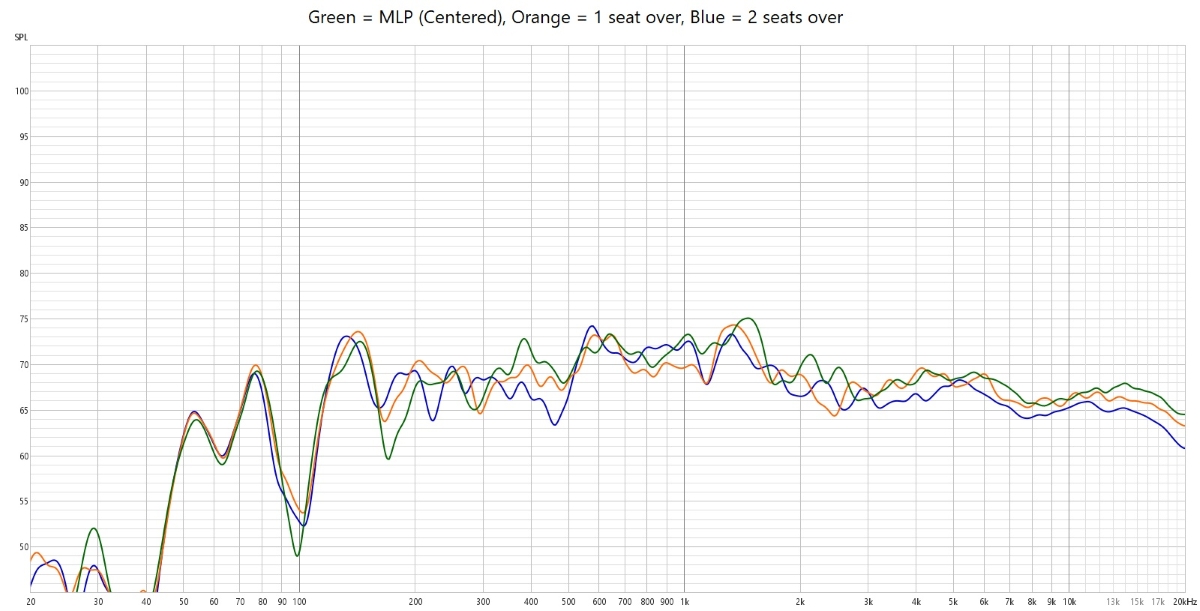Their full-bodied, detailed sound—particularly in the midrange and treble—is exceptional at this price point. They’re also visually elegant and well-built. Bass performance was somewhat limited in the room, but this is easily resolved with subwoofers. The QR C SE center sounds great on-axis but falls short in wider seating arrangements due to dispersion issues. It’s ideal for solo listeners or narrow setups, but less so for multi-row home theaters.
Looking for a good-looking, great-sounding, and relatively affordable pair of tower speakers? Then you’re in for a treat. Audiovector’s QR SE lineup may be their least expensive, but it’s still cutting-edge by any standard.
Audiovector QR7 SE and QR C Speaker
- Three-way ported tower and two-way ported center channel speakers
- Gold Leaf Air Motion Tweeters
- Hand-built in Denmark
- Satin and gloss finish options
- Very good overall build quality
Founded in 1979, Audiovector is a family-owned Danish company rooted in a “music comes first” design philosophy. Known for creating natural, uncolored sound, Audiovector has earned acclaim for its flagship models. Now, their QR SE (Special Edition) line—the most affordable in their catalog—aims to bring that signature sound to a broader audience.
The QR SE series includes three tower speakers, a bookshelf, a center channel, an on-wall surround speaker, and a subwoofer. For my large 22’ x 28’ media room, I chose to evaluate the largest tower, the QR 7 SE, along with the QR C SE center channel as a complete front sound stage for my 7.2.6 Dolby Atmos system.
Design:
3-way ported tower
Frequency Response:
23 Hz – 52 kHz
Gold Leaf (AMT) Upper Limit:
102 kHz
Sensitivity:
90.5dB/1W/1m
Impedance:
6 Ohms
Power Handling:
330 W
Crossover Frequencies:
425 Hz, 3000 Hz
Drivers:
2 x 8” bass, 1 x 6” midrange, 1 x Gold Leaf AMT 2 with S-stop
Available Finishes:
Piano Black (gloss), Dark Walnut (satin), White Silk (satin)
Dimensions (W x D x H):
9.84 x 15.75 x 44.88”
Weight:
78.9 lbs.
Warranty:
5 years
MSRP:
$3,400.00 each
Design:
2-way ported center channel
Frequency Response:
38 Hz – 45 kHz
Gold Leaf (AMT) Upper Limit:
105 kHz
Sensitivity:
90dB/1W/1m
Impedance:
4 Ohms
Power Handling:
220 W
Crossover Frequencies:
3000 Hz
Drivers:
2 x 6” mid woofer, 1 x Gold Leaf AMT 2 with S-stop
Available Finishes:
Piano Black (gloss), Dark Walnut (satin), White Silk (satin)
Dimensions (W x D x H):
19.37 x 8.74 x 7.6”
Weight:
20.7 lbs.
Warranty:
5 years
MSRP:
$1,350.00
Website:
Company:
SECRETS Tags:
Audiovector, QR7 SE, QR C, QR C SE, Floor-standing, Center Channel
Secrets Sponsor
Audiovector builds each of its speakers by hand in its own factory in Denmark. Following a classic Scandinavian aesthetic, the overall look of the QR SE series speakers is relatively simple, but with some nice touches. The overall cabinet shape is a standard rectangle, but the top and bottom edges are nicely rounded, breaking up the boxy look. The Dark Walnut wood veneer on my QR 7 SE samples was beautiful and closely matched the walnut of my Salamander equipment racks. It was also a satin finish, which adds a modern touch and has the added benefit of reducing light reflections. My QR C SE sample was finished in “White Silk,” which is a satin white paint. It really suited the QR C SE’s design and would look awesome in a room with modern décor. If you want something shinier, Audiovector also offers the QR SE line in gloss Piano Black. The main cabinet of the QR 7 SEs is mounted to a separate plinth with about a 1” gap that gives the downward-firing port space to breathe. New to the SE line are machined stainless steel carpet spikes that screw into the plinth and allow for some tilt/rake adjustment. The plinth is also a bit wider than the tower cabinet, which puts the feet in a wider stance that improves stability.
The drivers are really the highlight of the QR SEs’ overall design. The surrounds are machined from aerospace-grade aluminum and then are glass-blasted, brushed, and finally anodized in a Tungsten Titanium Grey color. “Audiovector” is visible in the raw silver color of the aluminum underneath. This is top-notch metalwork, and it made the drivers really pop against the Dark Walnut and White Satin finishes. The Gold Leaf Air Motion Tweeter (AMT) is a work of art in itself, with a rose gold-plated “S-STOP” dispersion mesh mounted inside a separate aluminum fascia plate finished in the same Tungsten Titanium Grey color. The S-STOP filter was specifically designed to reduce sibilants without impacting treble clarity. The AMT on the QR7 SE (and the QR5 SE) is a bit taller than on the QR C SE so I was curious if I would hear any difference between the two. A single pair of binding posts are mounted to a matching aluminum plate towards the bottom of the back baffle, so fans of bi-amping/bi-wiring will be out of luck. Simple rectangular cloth grilles are included which attach magnetically to the front baffles, but the QR SEs look (and sound) better with them off.
What makes the Special Edition line different from the original QR line? From the outside, there isn’t much new besides a bronze “Special Edition” badge at the bottom of the front baffle, but there are a bunch of small improvements internally. New capacitors designed by Audiovector are said to offer a cleaner-sounding treble with increased detail. The resistors are now housed in metal for Improved heat dissipation and better handling of high-power levels. The internal wiring has been upgraded to cryogenically treated pure copper for better dynamics and increased detail. Nanopore dampening material has been added for improved midrange quality. Finally, the tuning of the cabinet for bass reflex has been changed to improve bass precision.
Getting the QR 7 SEs and QR C SE installed in my media room was pretty easy. While fairly large, the towers aren’t ridiculously heavy, so it was pretty easy to get them out of their boxes and put them in place of my reference Sonus faber Olympica III towers. The QR SE’s single set of binding posts meant that I had to swap out the bi-wired Kimber Kable Carbon 16 speaker cables that I typically use for a set of Blue Jeans Cable Ten White cables. The QR C SE took the place of my Sonus faber Olympica Center on top of my Salamander 20 equipment stand, which put the speaker just below the bottom edge of an 83” Sony OLED TV. This put the QR C’s tweeter about 20” below ear level. I wish Audiovector had included a way to adjust the rake of the QR C SE; even some extra tall rubber feet for the front of the cabinet would do the trick. To keep the front soundstage as consistent as possible, I also ran a Blue Jeans Cable Ten White speaker cable to the QR C SE. All three speakers were connected to an Apollon Audio 8-channel amp, which houses four stereo Purifi 1ET7040SA Class D amp modules. I bridge the channels for the left, right, and center speakers, so the QR C SE would be getting about 750 watts of power at its 4-ohm load and the QR 7 SEs would be seeing about 600 watts each at their higher 6-ohm resistance. My Trinnov Altitude 32 would be serving as the preamp with an Oppo UDP-205 UHD player as the source for disc-based material and Roon or Amazon Music via a FireStick 4K Max for any streaming or digital files.
Using REW and my Cross Spectrum Labs-calibrated UMIK-2 microphone, I spent some time moving the QR 7 SEs around my room, trying to find the best spot for the smoothest response. I had intentionally left the carpet spikes off for this process and the glossy black paint on the QR 7 SE’s plinths made them easy to slide around until I found the right spot. I would up with the speakers 26” from my front wall and 36” from my side walls. I also found that keeping the toe-in fairly minimal (around 10-15 degrees) worked best with the QR 7 SEs. This gave me a smooth in-room response, particularly from 2 kHz on up. However, no matter where I put the speakers, I couldn’t seem to get much bass response below 60 Hz or so. Even putting the speakers closer to the corners of the room didn’t help. Below is the response I ended up with for the right QR 7 SE (1/6 octave smoothing). The green trace is the response with the cloth grille in place; the orange is without the grille. The grilles didn’t do too much damage to the response, only knocking around 1dB off the signal from 2 kHz on up. The large trough at 100 Hz is the result of my seating position and I have seen this dip with many other speakers in my room. The midrange has a little extra energy but that will only make the speaker sound a bit fuller and warmer and can easily be ameliorated with room correction. I was also surprised by how much energy was still present at 20 kHz. Most other speakers take a nosedive in my room starting around 13-14 kHz, so seeing the AMT in the QR 7 SEs only down 3dB at 20kHz was very impressive. With the positioning locked in, I screwed in the carpet spikes. My carpet and padding are pretty thick, so I had to adjust the spikes as far outward as I could to get proper coupling to my sub-floor. Even then, the plinth was still resting against the carpet. I’d like to see Audiovector supply longer spikes in the future.
The QR C SE’s frequency response at my main listening position is shown below. It is also pretty smooth, except for dips at 250 Hz and between 350 and 800 Hz. This is not something I typically see with other center channel speakers in this same position. Also, the bass response really started to taper off below 125 Hz. My Olympica Center has no trouble delivering solid 50 Hz bass in this exact same location, so it looks like the QR C SE just doesn’t have as much “oomph” down low. The green trace shows the response with the cloth grille in place. Like the grille on the QR 7 SE, it shaves about 1 dB of output off certain frequencies, most notably from 3 kHz on up. Oddly, it also seemed to add some energy at certain frequencies such as between 800 Hz and 1.4 kHz. I wonder if this could be some sort of resonance in the grille or the grille frame. This just further motivated me to put the grille back in the box. Who wants to cover up those gorgeous drivers anyway? As a final step, I ran a full “Optimizer” calibration on my Trinnov Altitude 32 pre-processor to get the levels and distances aligned for when I ran multi-channel sources. This would also allow me to match the frequency response to my preferred target curve.
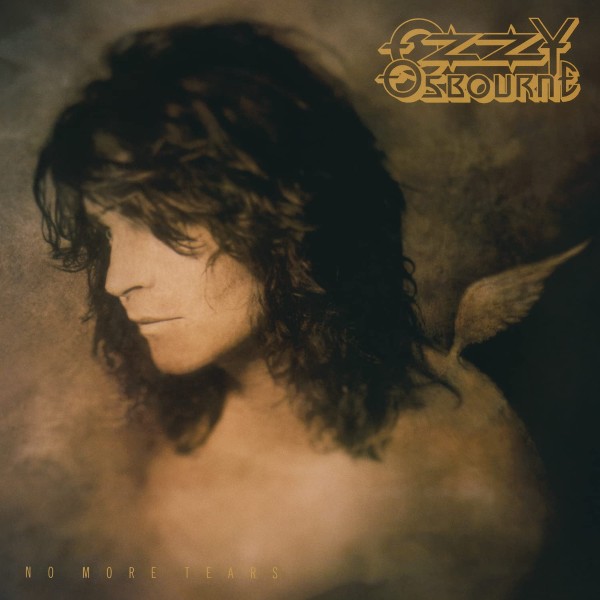
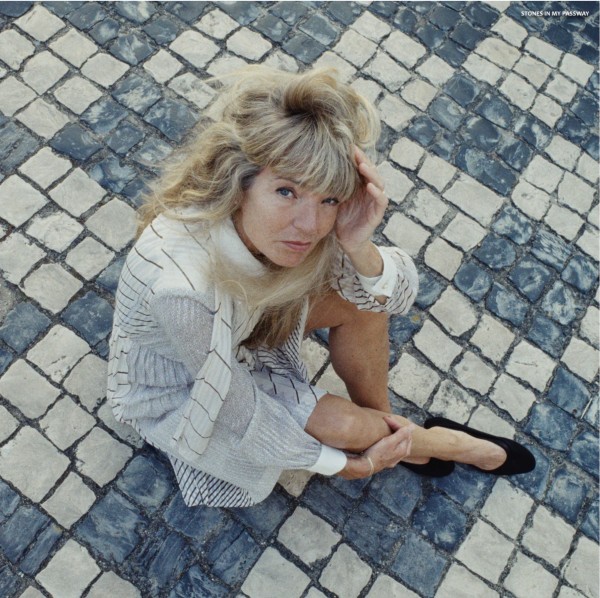
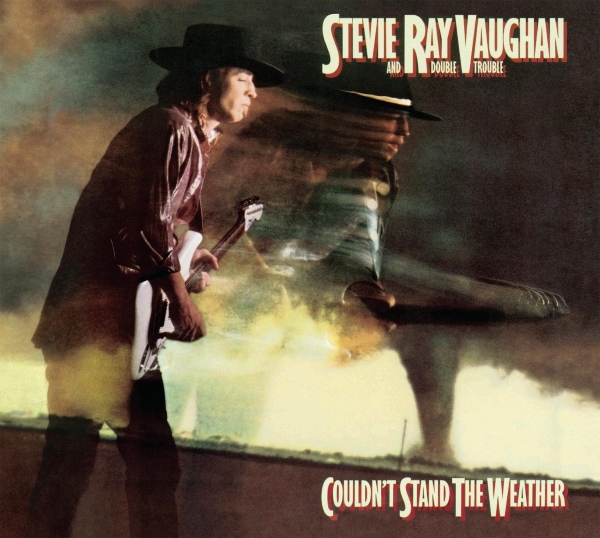
As is my custom, I started off my listening with two-channel music. To make sure that I was hearing only the native qualities of the QR 7 SEs, I shut off my Hsu subs and disabled the “Optimizer” room correction of my Trinnov processor. Then I went into Roon and picked some choice tracks to sample what the QR7 SEs could do. I recently downloaded a 24-bit/96 kHz FLAC high-res copy of my favorite Ozzy Osbourne album of all time, 1991’s “No More Tears.” The title track sounded so much more powerful and open on this high-res file. From the killer introductory bass line to Zakk Wylde’s killer slide guitar and main riff (complete with Zakk’s signature squeal), this was some great sound. The QR7s threw an impressively large soundstage, keeping Ozzy’s vocals and the synthesizer lines centered in the soundstage, but spreading outward with the piano breakdown that starts around the 3:30 mark. After Wylde’s guitar solo, the bass line punches back out from the central soundstage. I never noticed these imaging details on other copies of this album, and they really increased my enjoyment of the music. Bass was a bit weaker than I would like, but as I learned when positioning the speakers with the help of REW, the QR7 SEs were rolling off from 70 Hz down in my room. Turning my subs back on easily cured this. Skipping forward to “Time After Time,” the acoustic guitar intro really showed off the QR 7 SE’s exceptionally clean and balanced upper mids and treble. The guitar had a beautifully clear sparkle to it, as well as a great sense of body. The blend of sound between the midrange and AMT drivers was great, making the two almost sound like a coincident driver.
“Dust My Broom” from Carmen Gomes’ “Stones in My Passway” (32-bit/352 kHz WAV) was another phenomenal-sounding track through the Audiovectors. The bass sounded very natural and had good punch, even with the QR7 SE’s slight roll-off. Gomes’ voice was exceptionally pure and shone through with great detail. The electric guitar had the perfect amount of snap and bite while the cymbals on the drum kit had really nice “sizzle.” Once again, the midrange driver and the AMT were the stars on this track. Overall, the song sounded big and rich, with great balance from the upper bass all the way through the treble. The soundstage was large, and I could hear each instrument’s position from the stereo image. “Tin Pan Alley” from Stevie Ray Vaughn’s “Couldn’t Stand the Weather” (FLAC 24-bit/176kHz) also sounded glorious. The tone from Stevie’s Stratocaster was perfect with the QR7 SEs capturing his single-coil pickups in all their glory; full-bodied but with that unmistakable quack/twang. You could even hear the reverb added via the amp (or in the studio). Stevie starts the vocals out soft and breathy and then kicks things up with his signature grit and growl. Again, the tonal balance was spot on. This balance is what really stuck out to me from my listening sessions. The QR 7 SEs delivered a fundamentally “right” sound. They didn’t hide specific frequency bands or overemphasize certain ranges. This allows a listener to just relax and enjoy the music. I’ve heard many far more expensive speakers fail to deliver this sense of musical ease.

Being very pleased with the sound of the QR 7 SEs with two-channel music, I re-enabled the Optimizer on my Trinnov and moved on to multi-channel sources to bring the QR C SE into the mix. “Andor: Season Two” (5.1 Dolby Digital+) aired on Disney+ while I had the Audiovectors setup, so I binged the whole season over a few nights. The first episode kicked things off with a bang with Cassian Andor stealing a prototype TIE Avenger fighter from the Empire. The front sound stage was really active here, with the sounds of the ship scraping the docking bay and the scream of the fighter’s twin ion engines (the TIE in TIE fighter) filling up my room. Once Cassian figures out how to fire the ship’s lasers things get even more interesting. I loved the Gatling-style cannon they fitted to the ship and the roar it made when firing. All of this sounded great through the three Audiovectors with each crash, scrape, and laser blast coming through succinctly. Timbre matching between the front three speakers was very good, with the sound moving seamlessly from speaker to speaker. Mon Mothma’s speech to the Senate later in the season really highlighted how good the QR C SE could sound with dialogue. Her voice sounded incredibly natural, with the added body of the reverb from the Senate Hall thrown in to make the words sound even larger and more powerful.

Moving on to a favorite demo disc of mine, I put the Blu-ray of “Pacific Rim” into my Oppo player. The Audiovectors really showed off the 7.1 DTS-HD Master Audio track with powerful dynamics and their ability to let me hear every single detail in the Jaeger’s mechanical movement. Even more amazing was how well the QR SEs were able to highlight those sonic details without sounding even the least bit harsh. Marshall Pentecost’s famous “Cancel the Apocalypse” speech really showed off the QR C SE’s prowess with dialogue. Idris Elba has one of the most awesome voices in Hollywood and it sounded amazing through the Audiovectors. The prodigious bass inherent in this soundtrack blended smoothly between the QR SEs and my subwoofers with an 80 Hz crossover point on the mains and a 110 Hz point on the center channel. Watching “Conclave” (5.1 Dolby Digital+) gave me even greater respect for the QR SE’s wonderful midrange and treble capabilities. The introductory scene has Ralph Fiennes’ character walking down a tunnel and street towards the Vatican. I could hear every detail in his labored breathing and the sound of his dress shoes as they hit the pavement. Combined with the ambiance from the surround channels and the cars passing by, this intro scene sounded like I was walking down the street myself. Then he enters an elevator and cracks his knuckles. Through the Audiovectors, this crack sounded absolutely spot on. This is a dialogue-heavy soundtrack with lots of different accents, but I still had no issue hearing each and every word. I was commenting on the speech clarity and how awesome the introductory scene sounded to my wife when she killed my buzz by stating that things sounded a bit muffled to her. My wife has pretty good ears and is used to hearing lots of different speakers in our room, so I asked her to trade seats with me. Replaying the introductory scene the sound was certainly different from her seat versus my usual spot directly on-axis with the center channel. The sound of his footsteps on the pavement and the crack of his knuckles lacked the crispness I had heard from the on-axis listening position. Shifting my head slowly towards the center line, I could hear the detail coming back. Some further investigation was needed.

The next day I was able to take some additional frequency response measurements with REW. Sure enough, the measurements confirmed what we were hearing with Conclave. As you move off-axis (10+ degrees), the response of the QR C SE changes quite a bit, particularly from about 700 Hz all the way to around 6500 kHz. Moving one seat over (about 24”) from my on-axis main listening position resulted in as much as a 6 dB difference (@350 Hz and 3 kHz) in output. Two seats over gave me differences of as much as 9-10dB in output in the midrange and lower treble. To my ears, this was a classic example of “comb-filtering,” or poor dispersion that is often the byproduct of 2-way horizontal center-channel designs with a midrange-tweeter-midrange (MTM) array. Given how good the QR C SE sounds on-axis, I’d love to see Audiovector address this with an updated design in the future, perhaps by moving to a true 3-way design that adds a dedicated midrange driver.
For comparison’s sake, I did a similar set of measurements on the right channel QR 7 SE. Notice how similar the frequency response remains as I move off-axis.
Secrets Sponsor
At $6,800, the QR 7 SE Speakers aren’t cheap—but they deliver serious value. These towers are solidly built, visually striking, and sound fantastic.
- Balanced, neutral sound signature
- Excellent resolution and detail retrieval
- Exceptional vocal clarity
- Articulate yet sweet treble
- Rich, expressive midrange
- Clean, tight mid-bass
- Expansive soundstage
- Flexible room placement
- Modern, elegant cabinet design
- Longer spikes for the QR 7 SE would improve floor coupling
- Deeper bass response
- A 3-way center channel would improve horizontal dispersion
- QR C SE has a mild dip between 350-700 Hz
Their midrange and treble neutrality, combined with high detail resolution, are rare at this price point. At $1,350, the QR C SE center channel is reasonably priced, though its limited horizontal dispersion doesn’t quite live up to the high standard set by the QR 7 SEs.
The Audiovector QR 7 SEs absolutely delivered on Audiovector’s “music comes first” philosophy. They offered a full, rich sound from the mid-bass on up along with exceptional treble clarity from the Air Motion Tweeter. More impressive is that even with the exceptional level of treble detail, there was absolutely no excessive hardness or sibilance to the sound. While I do wish that the QR 7 SEs could have delivered deeper bass, they sounded wonderful with any source material I threw at them and made every listening session immensely enjoyable. The Audiovector QR 7 SEs are the rare speakers that can scratch your “audiophile” itch for detail and clarity without sacrificing the body and soul that make music (and movies) emotionally engaging. While the QR C SE shares the same basic sound qualities as the QR 7 SEs, the horizontal dispersion issues mean that it can sound great either on-axis or off, but not both. If you are a solo listener, this isn’t a problem, but if you have a multi-seat theater setup it will be much more challenging to strike a balance in sound across multiple seats. I highly recommend the QR 7 SEs but can only recommend the CR C SE for certain setups.


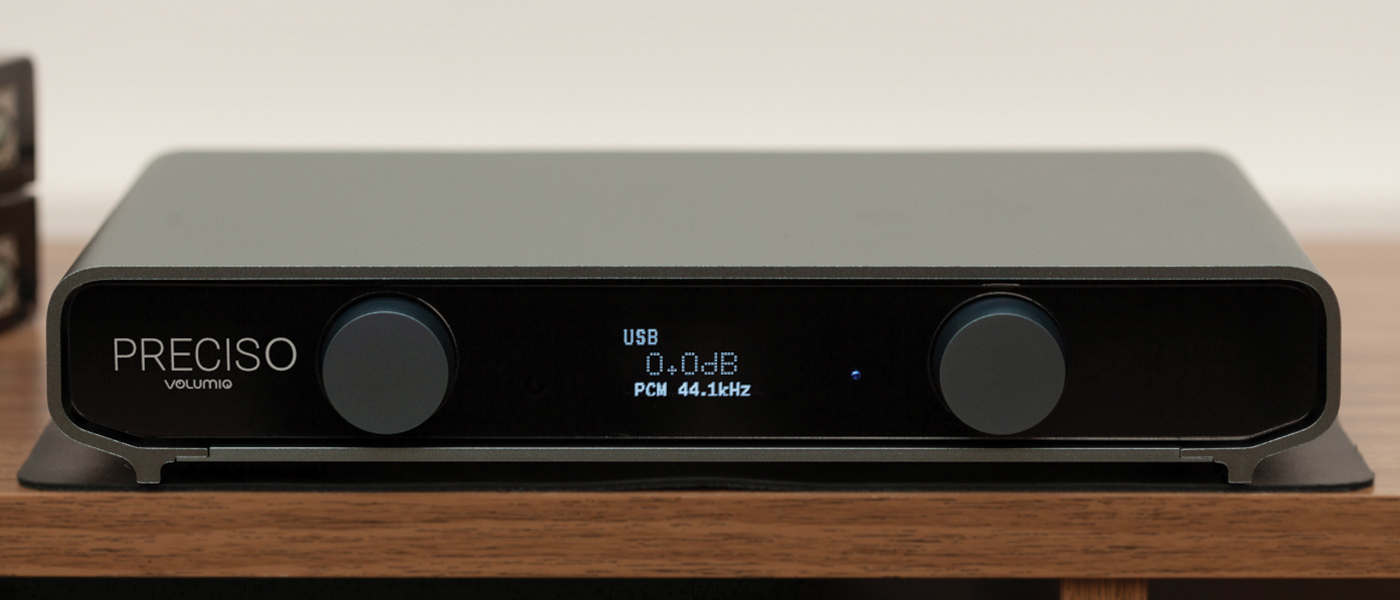
![Various different colored finishes [Piano Black (gloss), Dark Walnut (satin), White Silk (satin)] of the Audiovector QR7 SE and QR C SE Speakers Various different colored finishes [Piano Black (gloss), Dark Walnut (satin), White Silk (satin)] of the Audiovector QR7 SE and QR C SE Speakers](/wp-content/uploads/2015/06/fig1-audiovector-qrse-hero.jpg)
